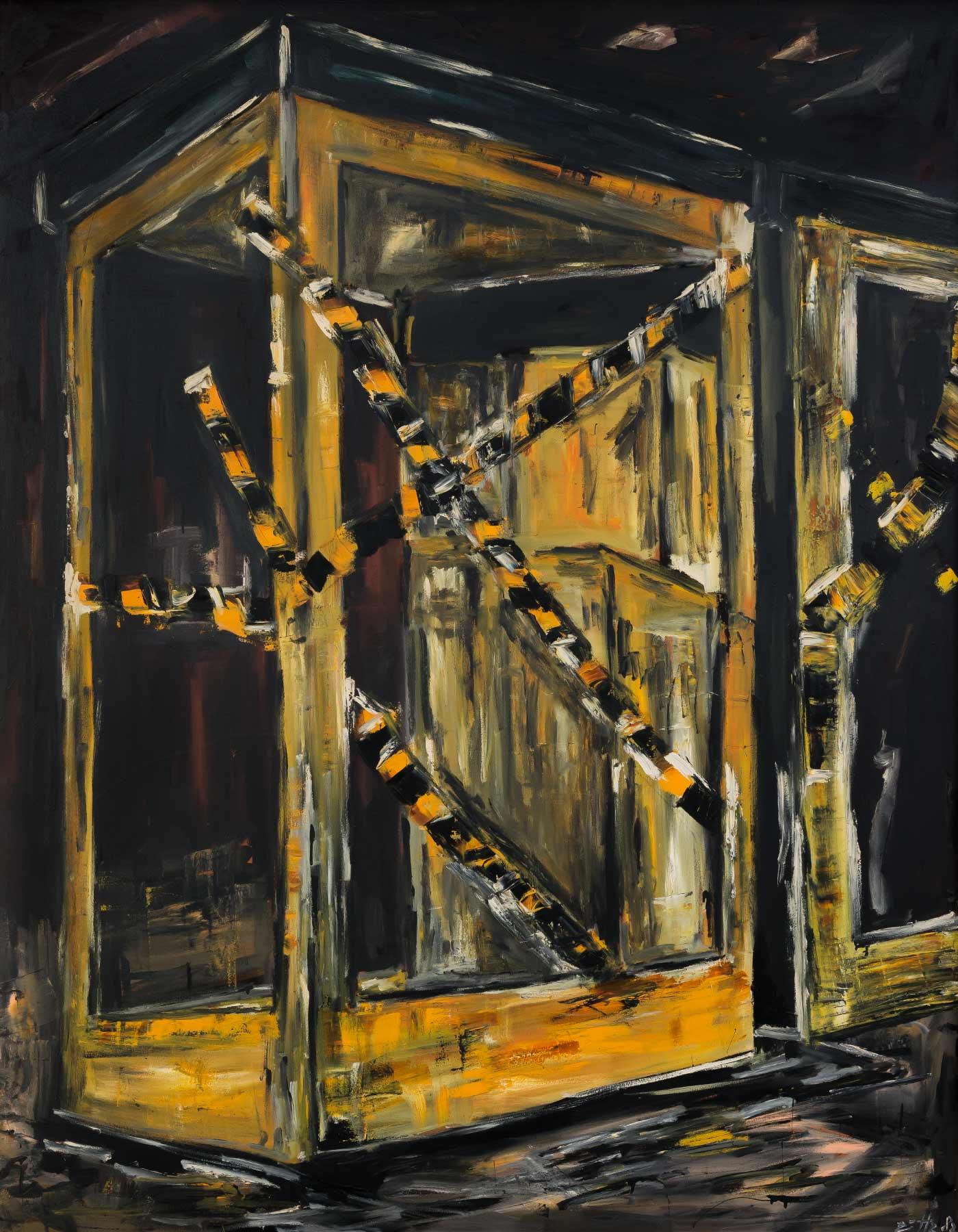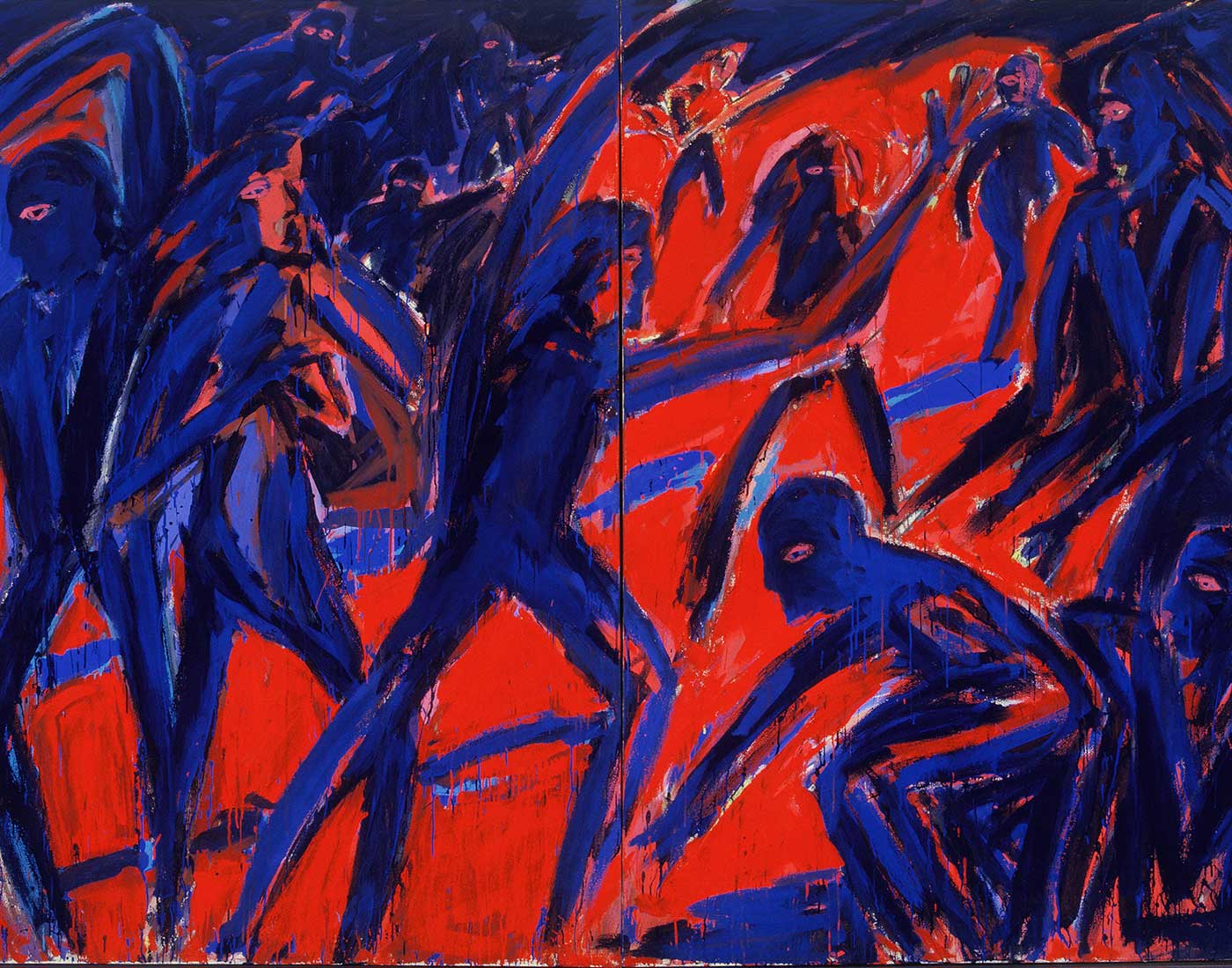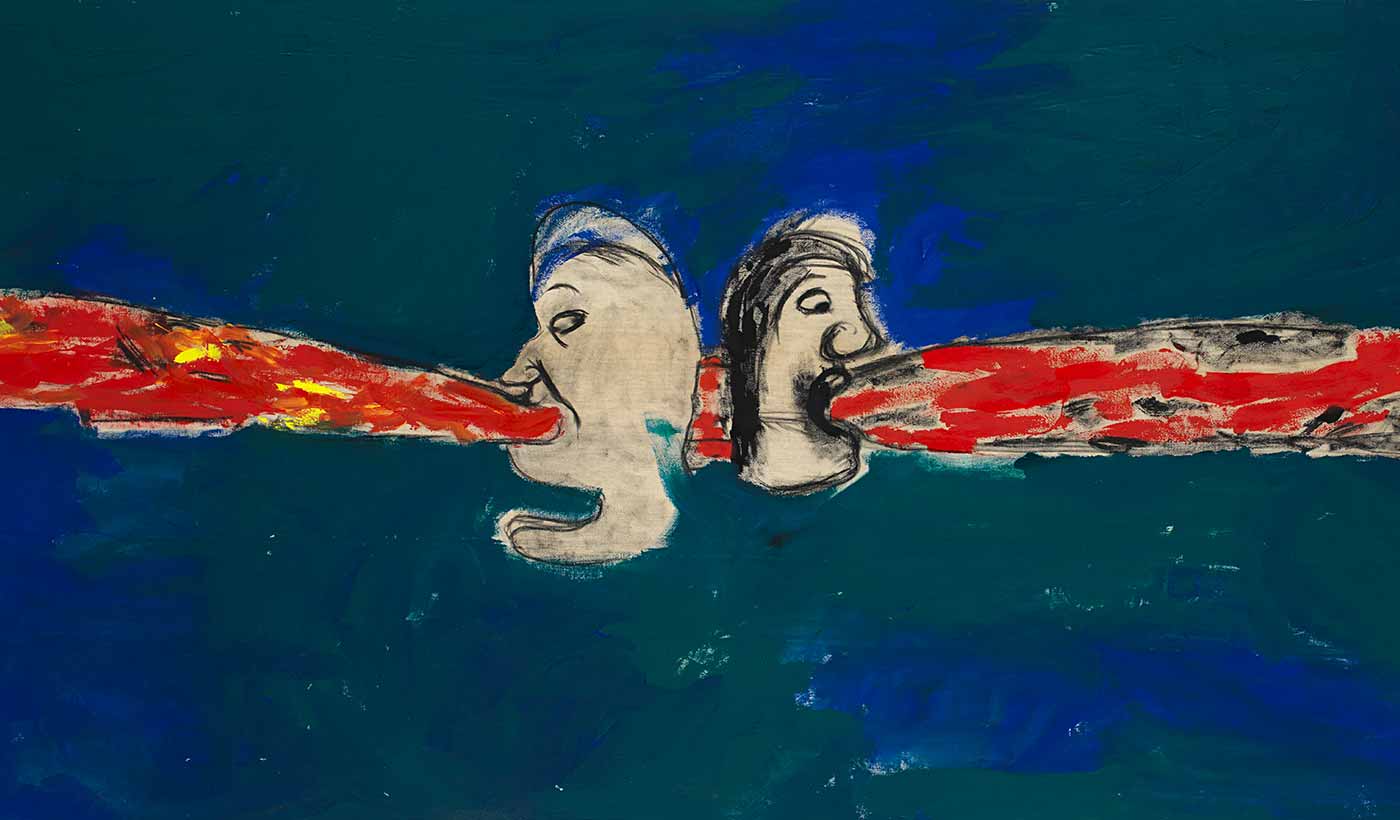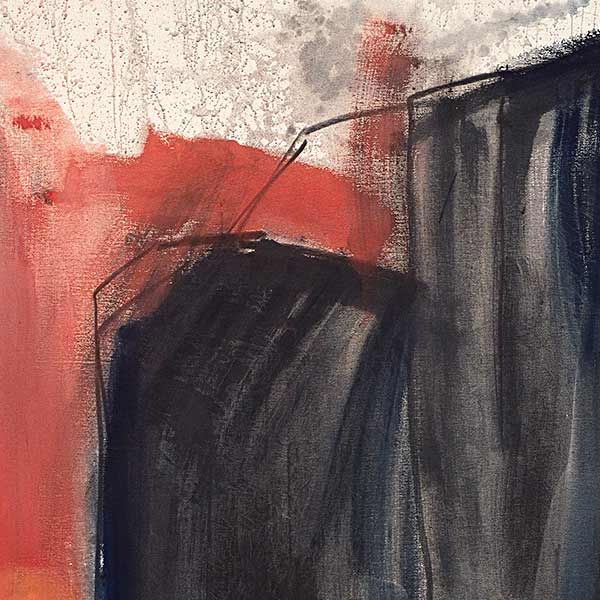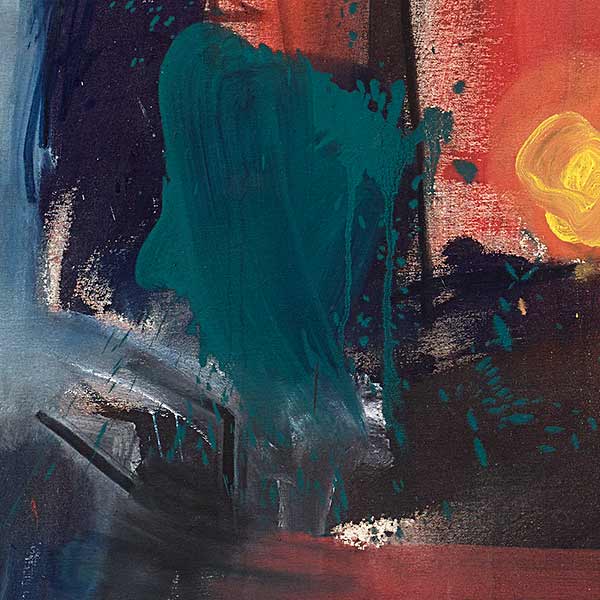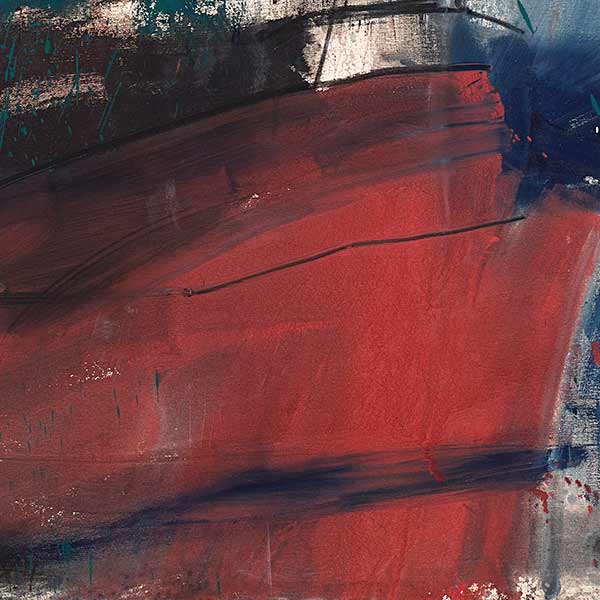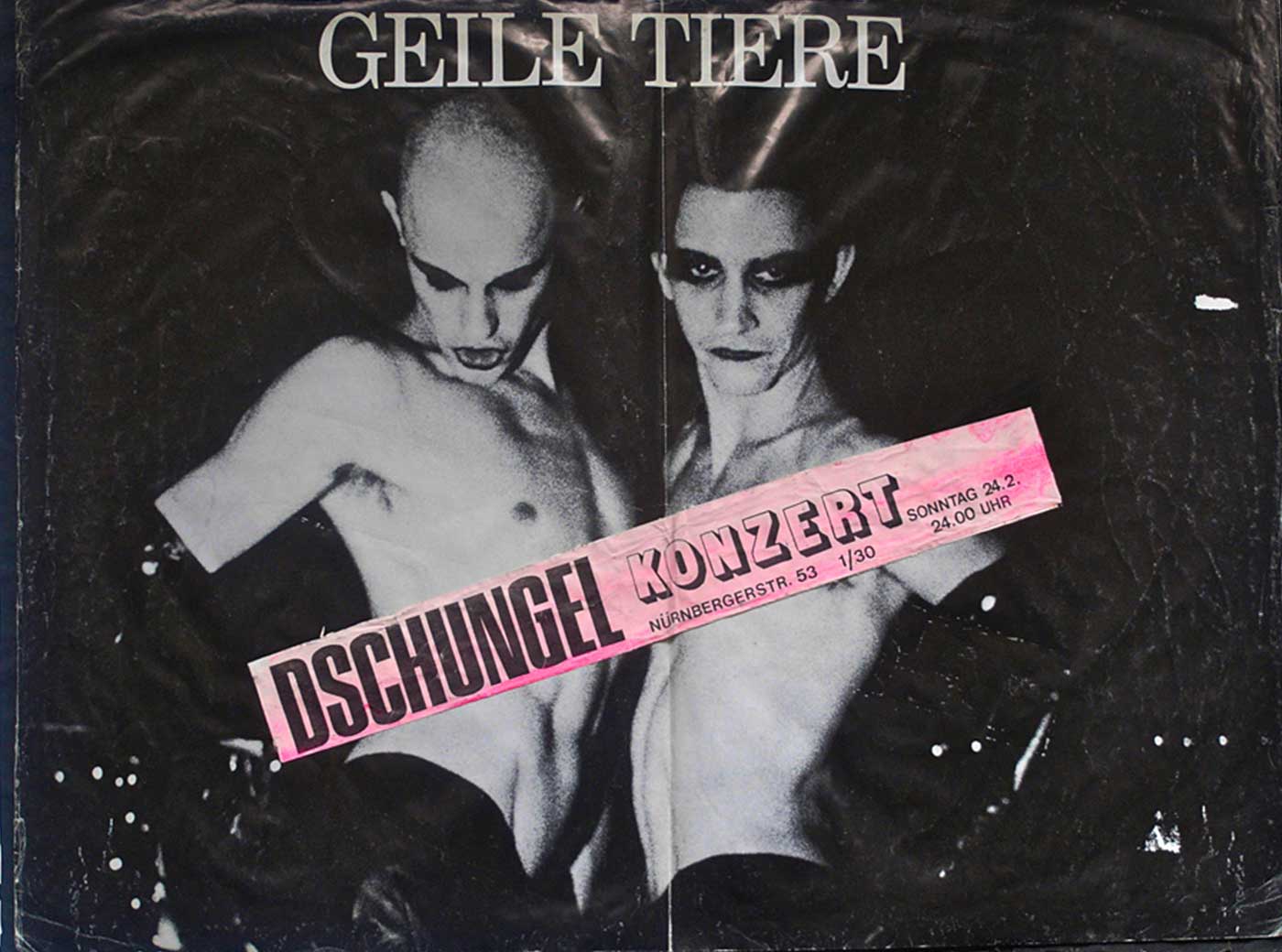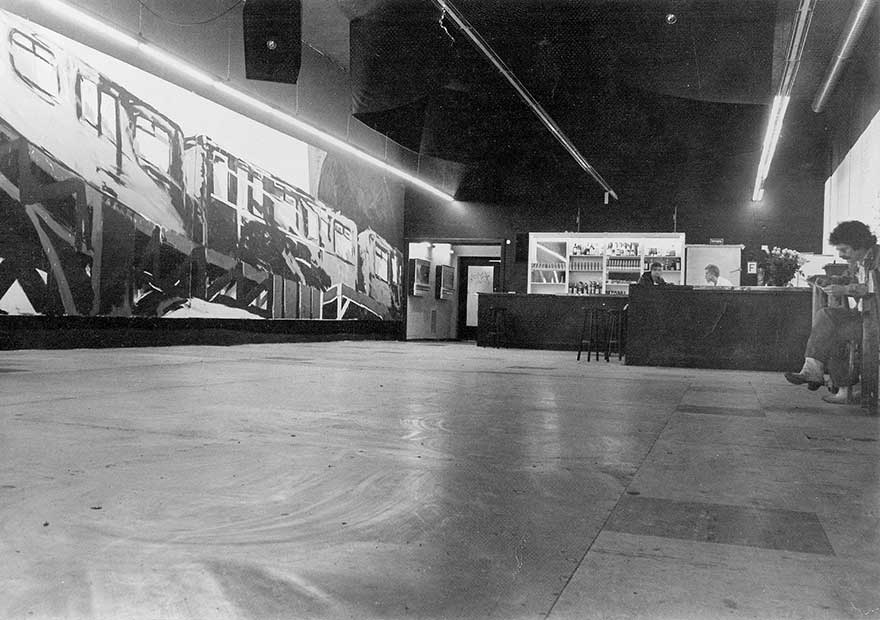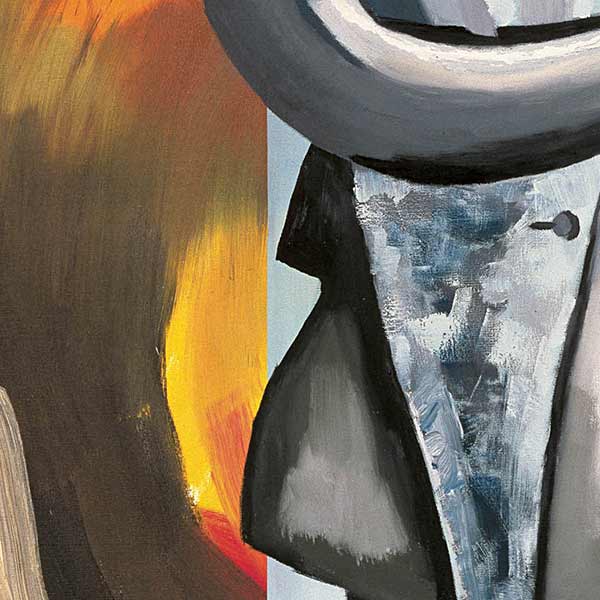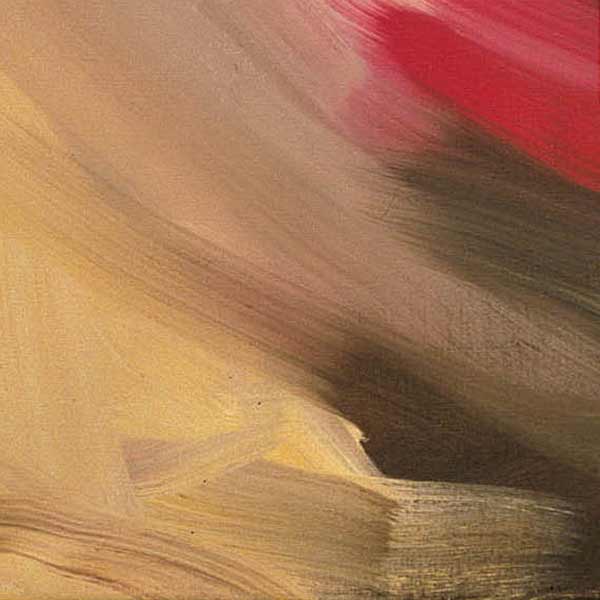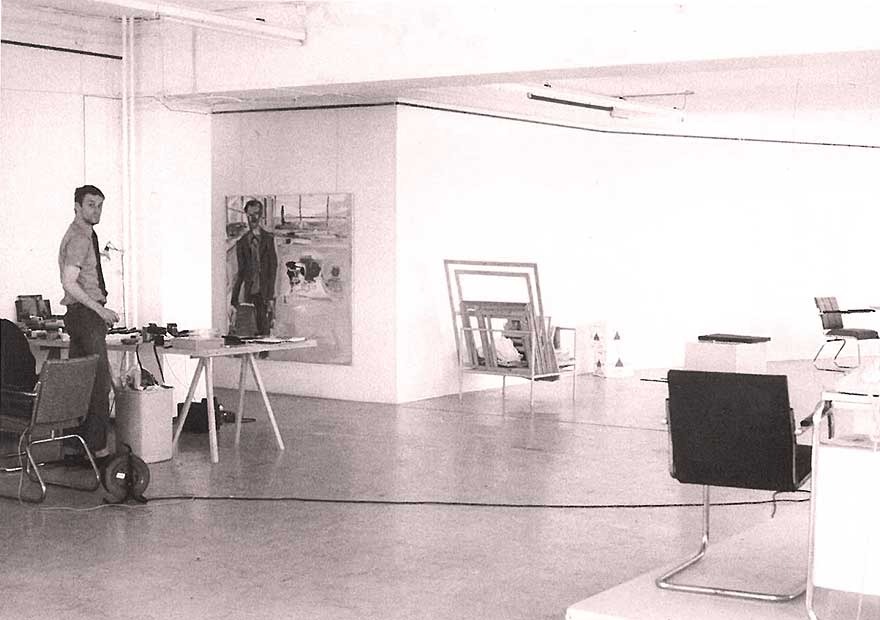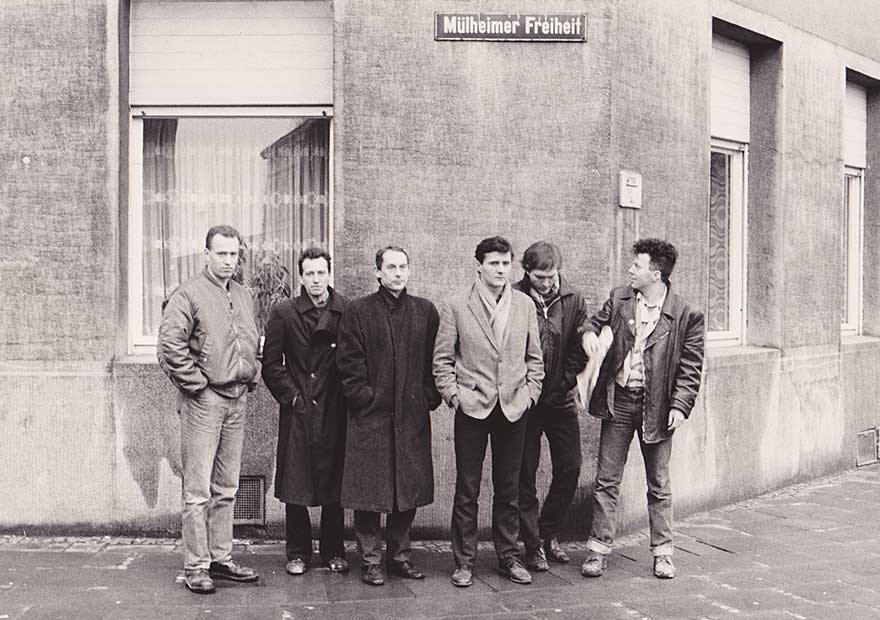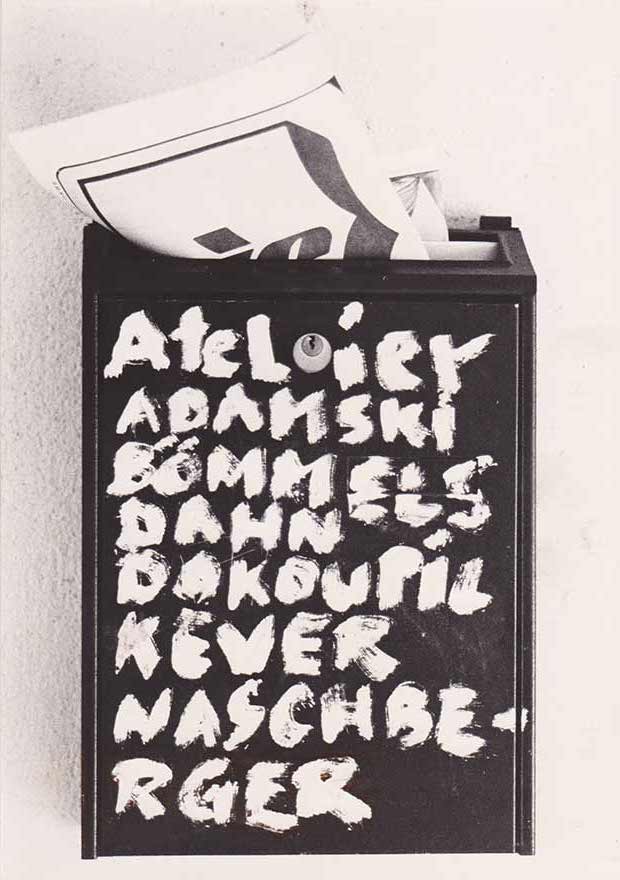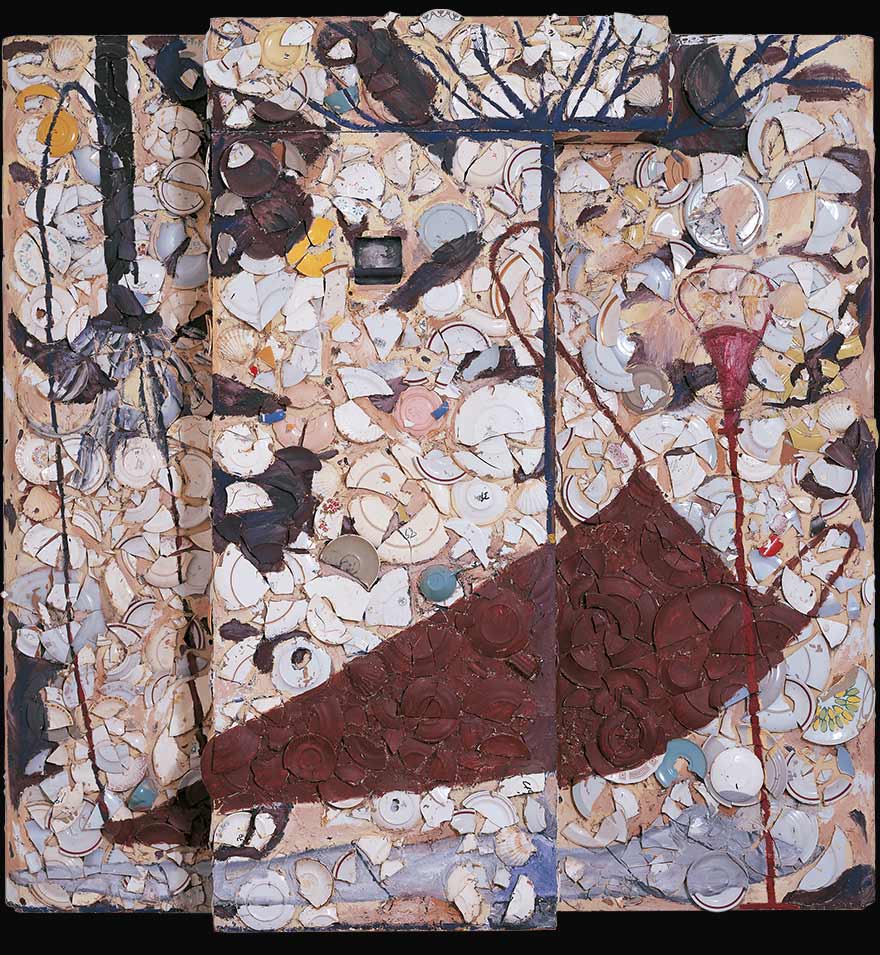In the early 1980s figurative-representational painting experienced a revival in the West German art scene. Soon painting described as “vehement” or “wild”, conquered the market and museums.
In the 1960s and 1970s, movements like the simplified Minimal Art and dematerialised Concept Art dominated the art scene. The medium of painting was considered untimely and outdated. At West German art colleges the focus was on installation and performance as well as photography and film.
In the works of painters such as Georg Baselitz, Gerhard Richter and Sigmar Polke an interest in figurative art began to show after the war. They were the precursors of the so-called “Junge Wilde (Wild Youth)”, who in the 1980s began to focus on painting anew.
Berlin, Hamburg, Köln and Düsseldorf were the centres of this development in West Germany. At art schools, in flats and studios the generation of those artists born around 1950 created paintings of unusual expressive strength and topicality, which in their diversity and directness were equally provocative and fascinating.
Although they successfully exhibited and sold art in the early 1980s, nobody anticipated the immense hype, which was soon to spring up around the artists.
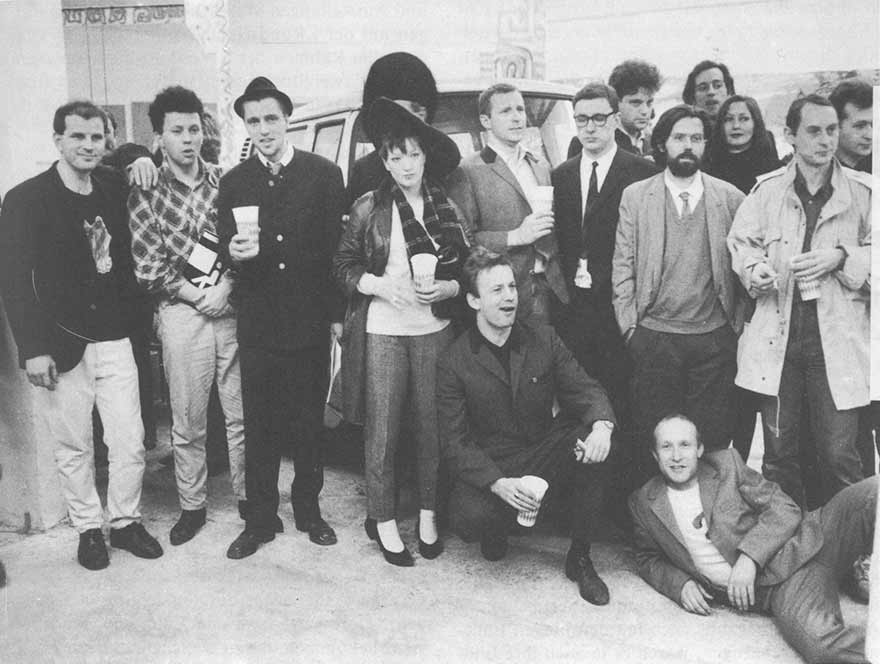
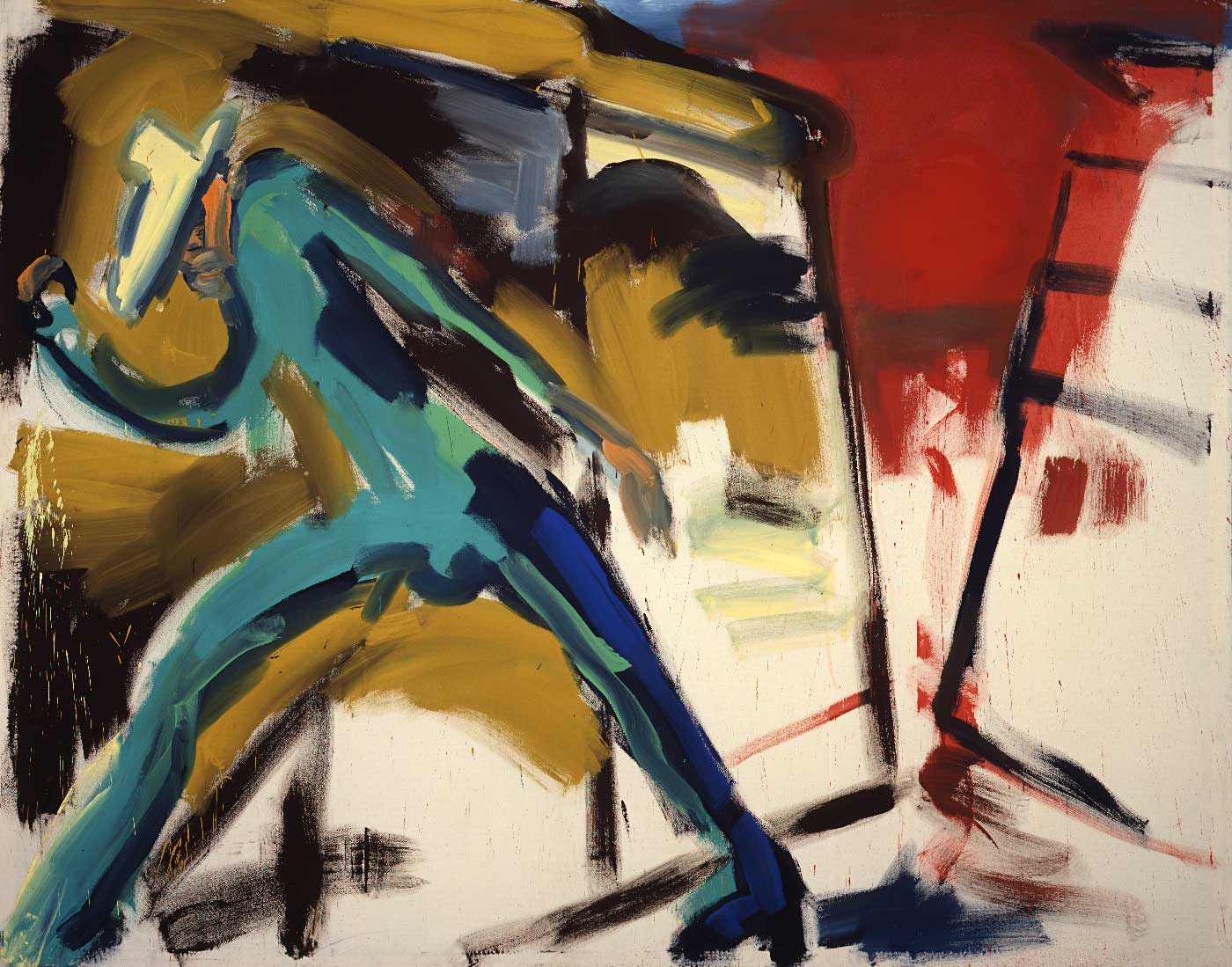
BETWEEN FIGURE AND INFORMEL

On the horizon of the metropolis, the sky is tinged in red. A person sitting on a wall is outlined before this panorama.
Like Salomé and Middendorf, G. L. Gabriel had studied with Professor K. H. Hödicke at the School of Fine Arts in Berlin. 1979 she first participated with a group exhibition at the Galerie am Moritzplatz. Like other female painters Gabriel regularly showed her works at this time. However, the group dynamics between the male colleagues did affect the female painters. They were less affected by the hype of 1980s painting.
I just wanted to show them that women can paint with vehemence, too. There weren’t so many women who had exhibitions.
G. L. Gabriel4
RUSH OF BLOOD
The naked bodies of the two male figures look as though they are lit by bright spotlights in a dark space. While one of them, covered in blood, is bound by his wrists and turning his back towards the viewer, the other is bent over on the floor at the standing man’s feet.
In his art Salomé was not simply interested in provoking reactions. His paintings are aiming for an open confrontation of the topic of homosexuality. West Berlin was more open to the strengthening gay movement than most other German cities. In the mid-70s Salomé joined the Homosexuelle Aktion Westberlin (HAW). Like many men there, Wolfgang Cihlarz – this is his civilian name – chose a pseudonym: Salomé. Thus he alluded to a cruel Biblical story: Salome, daughter of Herodias, delighted her public with her ecstatic dance to such a degree that her father granted her one wish. Solicited by her mother, Salome demanded that John the Baptist be beheaded.
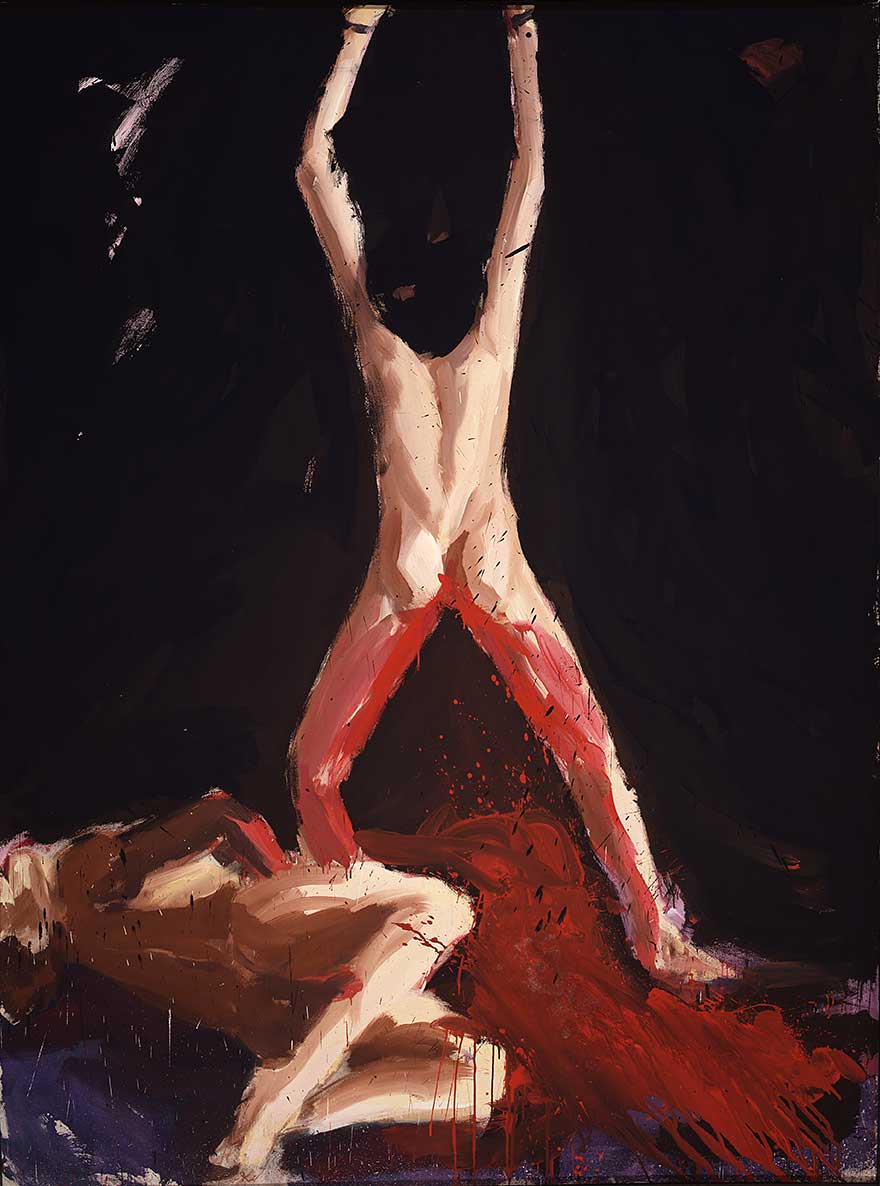
It was a sense of life. And out of this my figurative work evolved. Also out of a political battle, the will to emancipate and to represent male sexuality differently. Before there was nothing quite as aggressive to be found in painting.
Salomé5
GEILE TIERE
In 1978 the young Swiss artist Luciano Castelli visited one of Salomé’s exhibitions at the Galerie am Moritzplatz. Soon after they began to collaborate in music and painting.
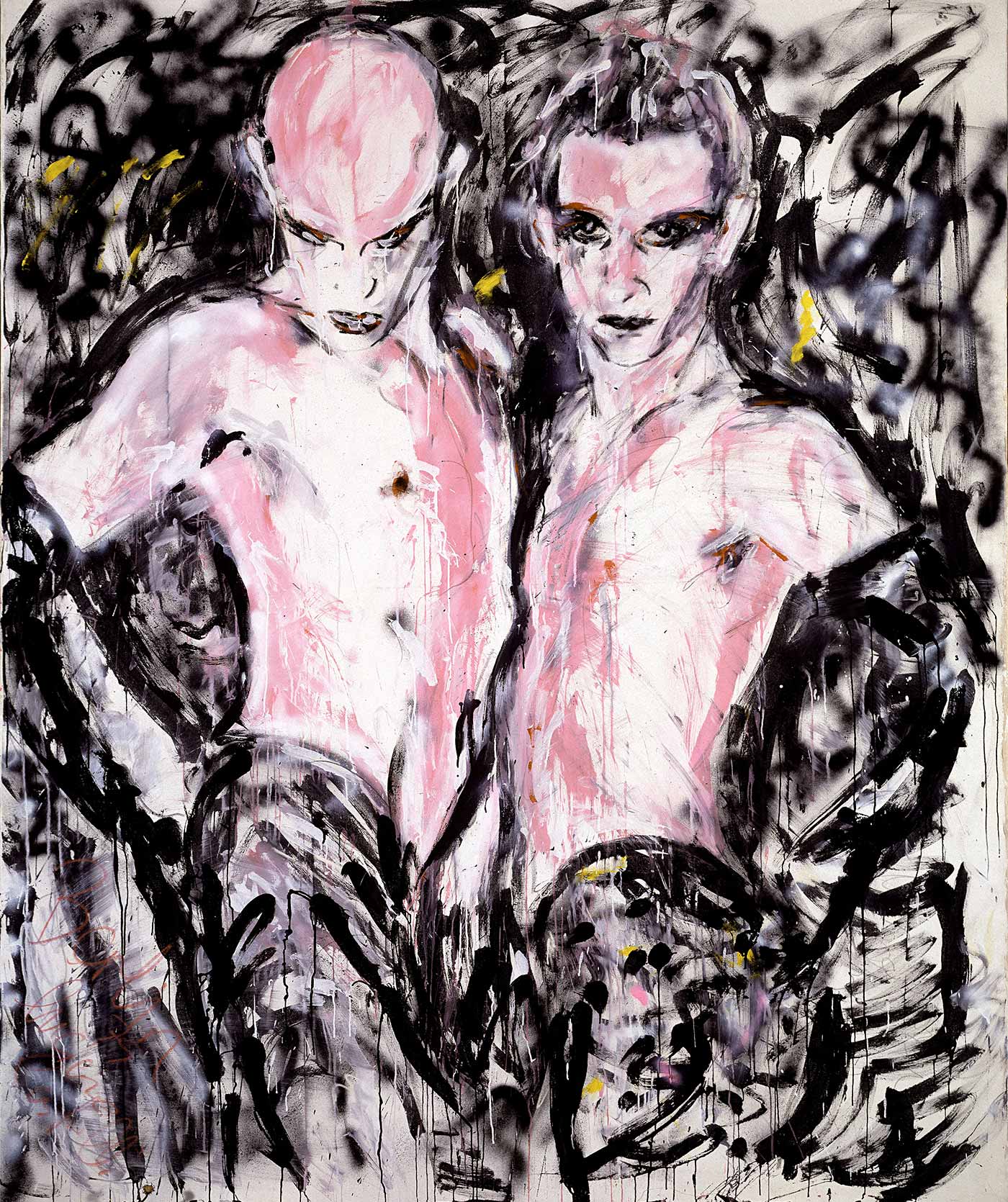
If you do a show think of something totally crazy, which you can later use in your painting.
Salomé7
COLOUR FIELD PAINTING

Bernd Zimmer’s large-scale landscapes provide a contrast to his colleagues’ works. In the Berlin subculture of the 1980s – a more and more emancipated gay movement, Punk and New Wave – they did appear very provocative, however. Zimmer sought to test the boundaries of painting.
Colour fields in deep yellow, warm reddish brown and ochre meet in “Field, Rape” on the 205 × 300 centimetre canvas. Even without knowing the title, they recall a landscape of fields. The thin, deep blue strip at the upper edge of the canvas, which is reminiscent of a clear sky, intensifies the impression. Zimmer’s oeuvre is referring to Colour Field Painting. This movement developed in the mid-1950s in the environment of the New York School in the USA.
NATIVES OF THE BIG CITY
The sketchily outlined figures look like people dancing away at night. The depth of the colour, the nocturnal atmosphere and the vehement brushstroke imbue the painting with intensity.
Helmut Middendorf produced an entire series of works called “Natives of the Big City”. In his art he brings together music and painting, which he considered essential. The intensity and purity of Punk music and subculture are transferred directly onto the large-scale canvas. Thus the music is reflected in the paintings as “expression of power”.
LONG NIGHTS
Resting the head on a tablet top, a person is shielding their face with their hands in a tired or perhaps ashamed gesture. The tablecloth, an abstract patch of colour, is an interesting contrast to the drunk’s body.
TWO INVENTORS
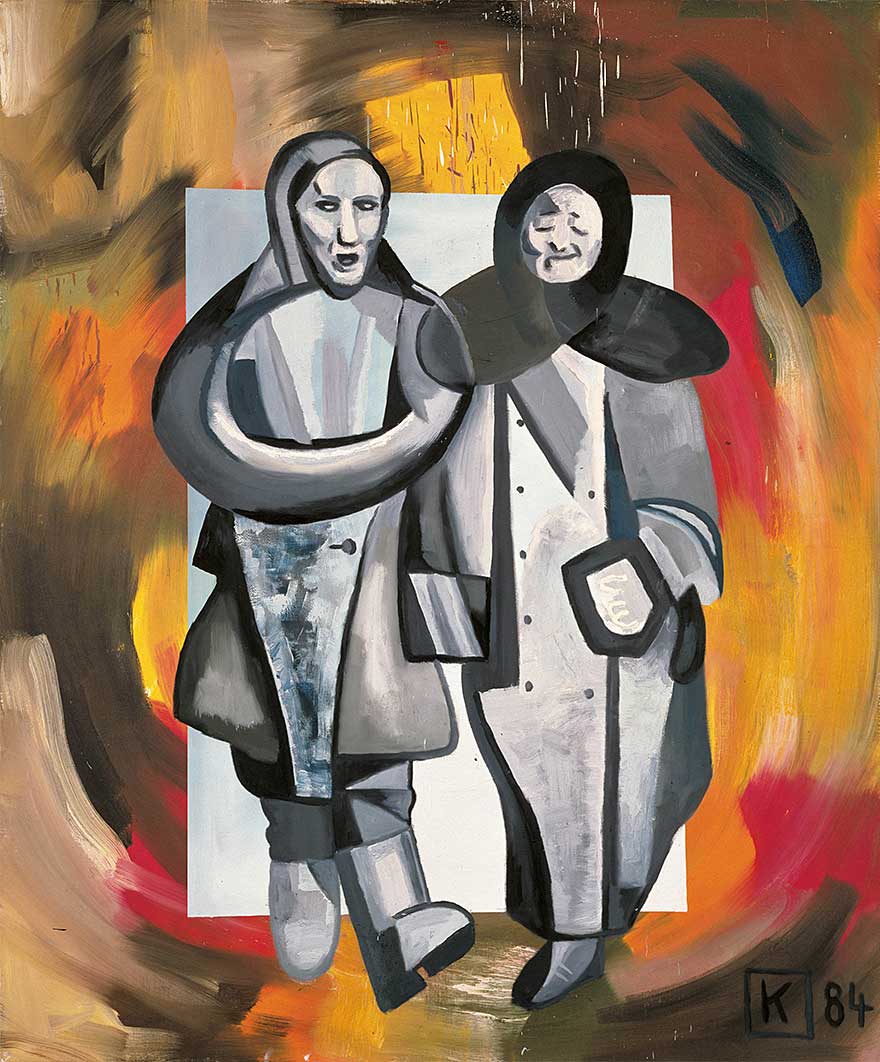
In the middle of an abstract vortex of colour are two figures depicted in grey. The monochrome rectangular space behind the two figures may be read as a hint at Suprematism – an abstract movement originating in Russia around 1915, with Kasimir Malevich being its most prominent representative. Both figures vaguely recall the style of Socialist Realism, the official art doctrine of Communism from 1932, which became obligatory for the entire Eastern Bloc after 1945. The brushstroke in the background in turn refers to informel painting – the predominant art movement after the War in the West.
In this painting Martin Kippenberger combined various artistic styles. With great irony he thus directs attention to the contradictions within an art scene, following political requirements at the service of an ideology. Above all, however, he mocks the intention of playing off abstract against representational art.
The title forms part of the concept. It describes both women as “proletarian inventors”. Their destination: an inventors’ convention. In East Germany “new” achievements were presented on such occasions. Frequently they were outdated and had already been applied in the West. In East Germany “innovations” were invented and presented with awards in various cities and not just once. Kippenberger often focused on such absurdities and interpreted them in his art with the humour characteristic of him.
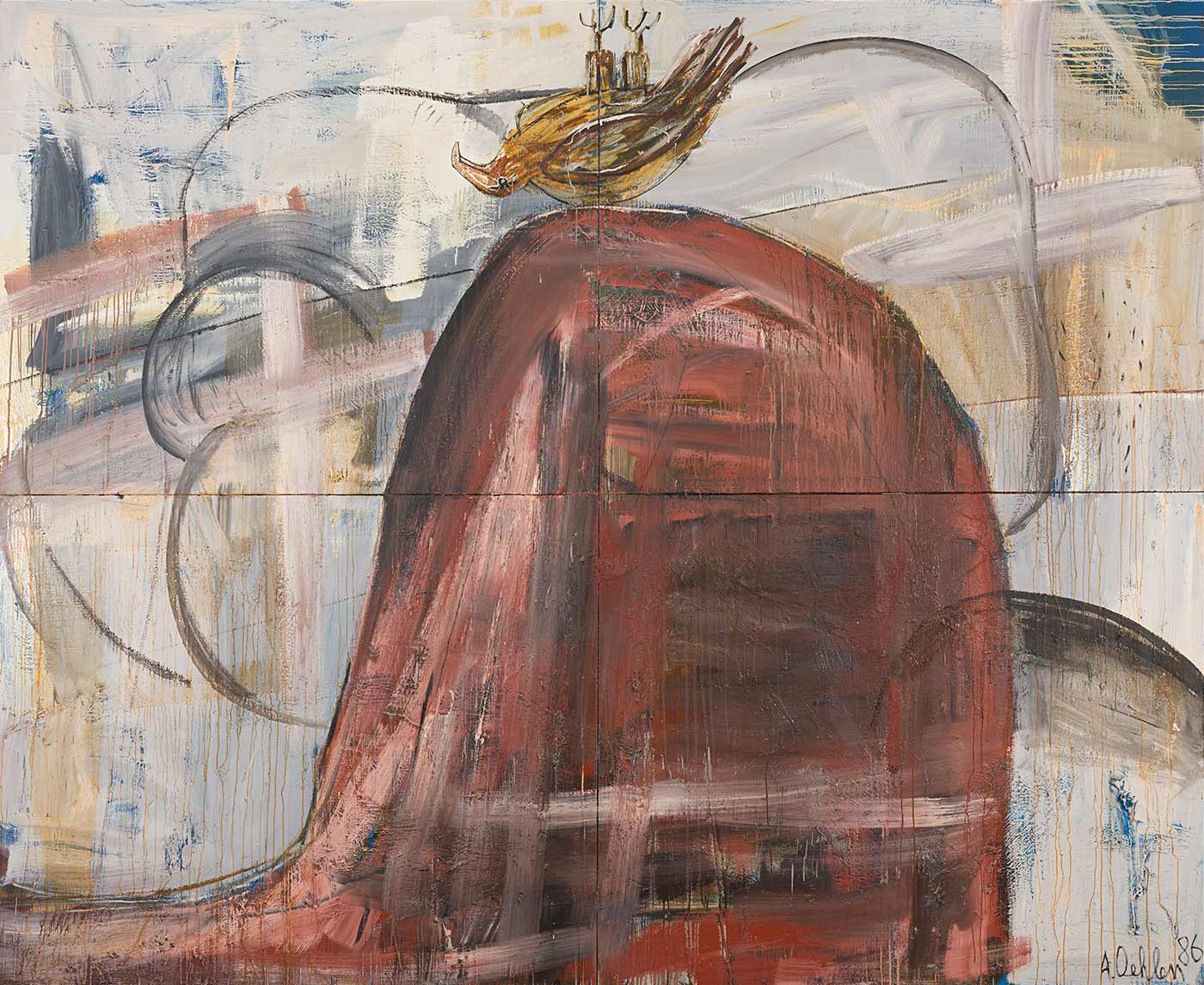
JUGGLING WITH MEANINGS
An eagle turned on to its back is lying on a mountaintop. The work’s title “German in Rio” inevitably provokes a number of associations: the eagle recalls the German heraldic animal and the rounded shape of the mountain is reminiscent of the Sugar Loaf Mountain of Rio de Janeiro.
They do not aim for a finite declaration, instead the intention is to open up a space for associations removed from any ideology; any attempt of categorising is being mocked. Political, historical and personal topics are reflected in the pictures in an attempt of reinventing painting.
Juggling of meanings and content is typical. The artist relinquishes the responsibility of interpretation to the viewer – also a political statement.
In the mornings we read the paper and at lunchtime we paint. The state is responsible for the outcome.
Albert Oehlen11
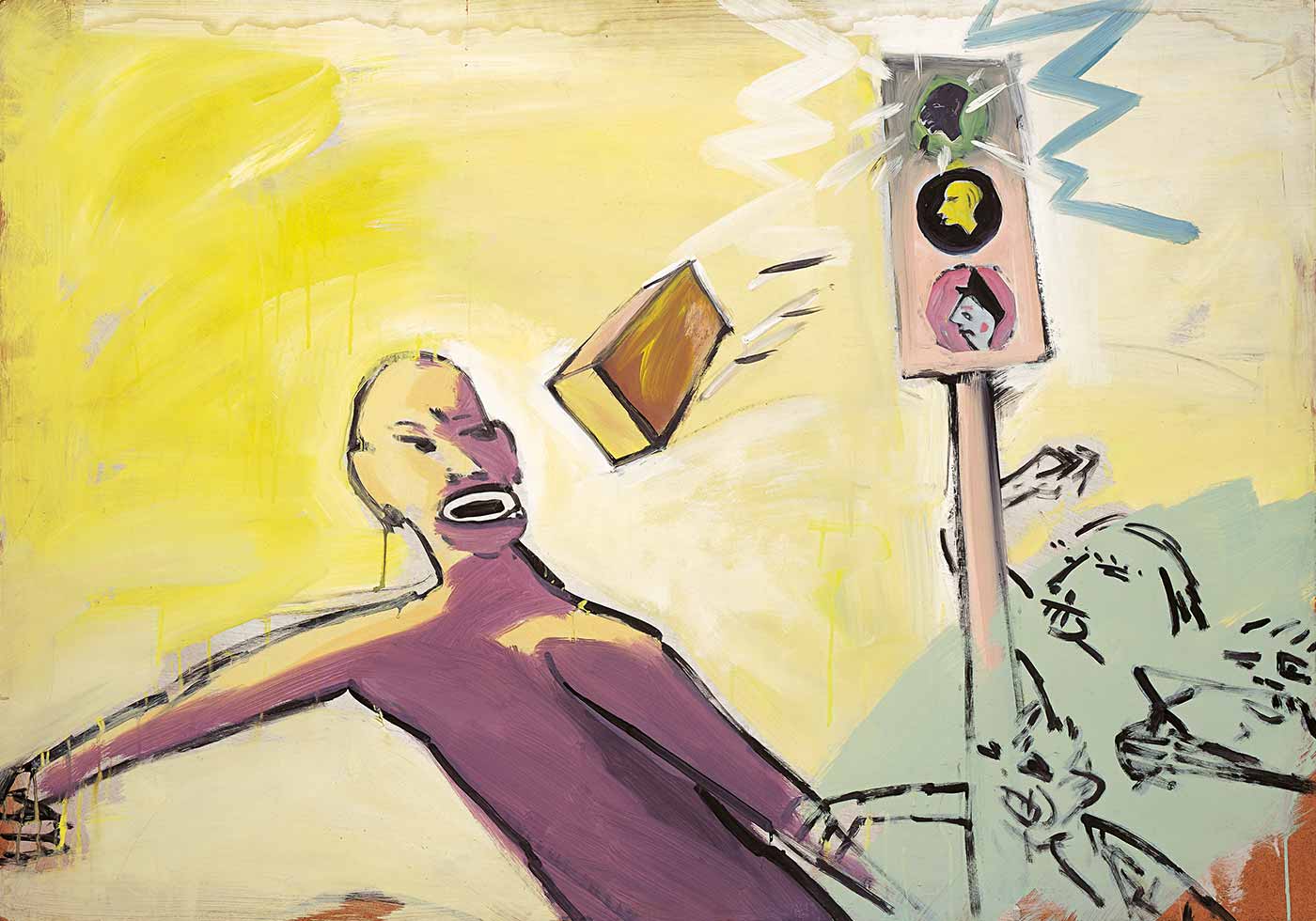
STONE-THROWER
A massive brick is flying through the air. It has not yet reached its destination. It is suspended between stillness and motion on “yellow”. The sketched agitated mob is approaching. One of them has already grabbed the victim’s arm.
Actually the painting of the stone-thrower represents the demonstrations of minorities, critical of the government. However, Georg Herold focuses on the victim of the aggressions: the ”Brick Nigger”. Using the derogatory term “negro” without any explanation, he adds to the title’s and the painting’s ambiguity.
NUDE WITH TRUMPET
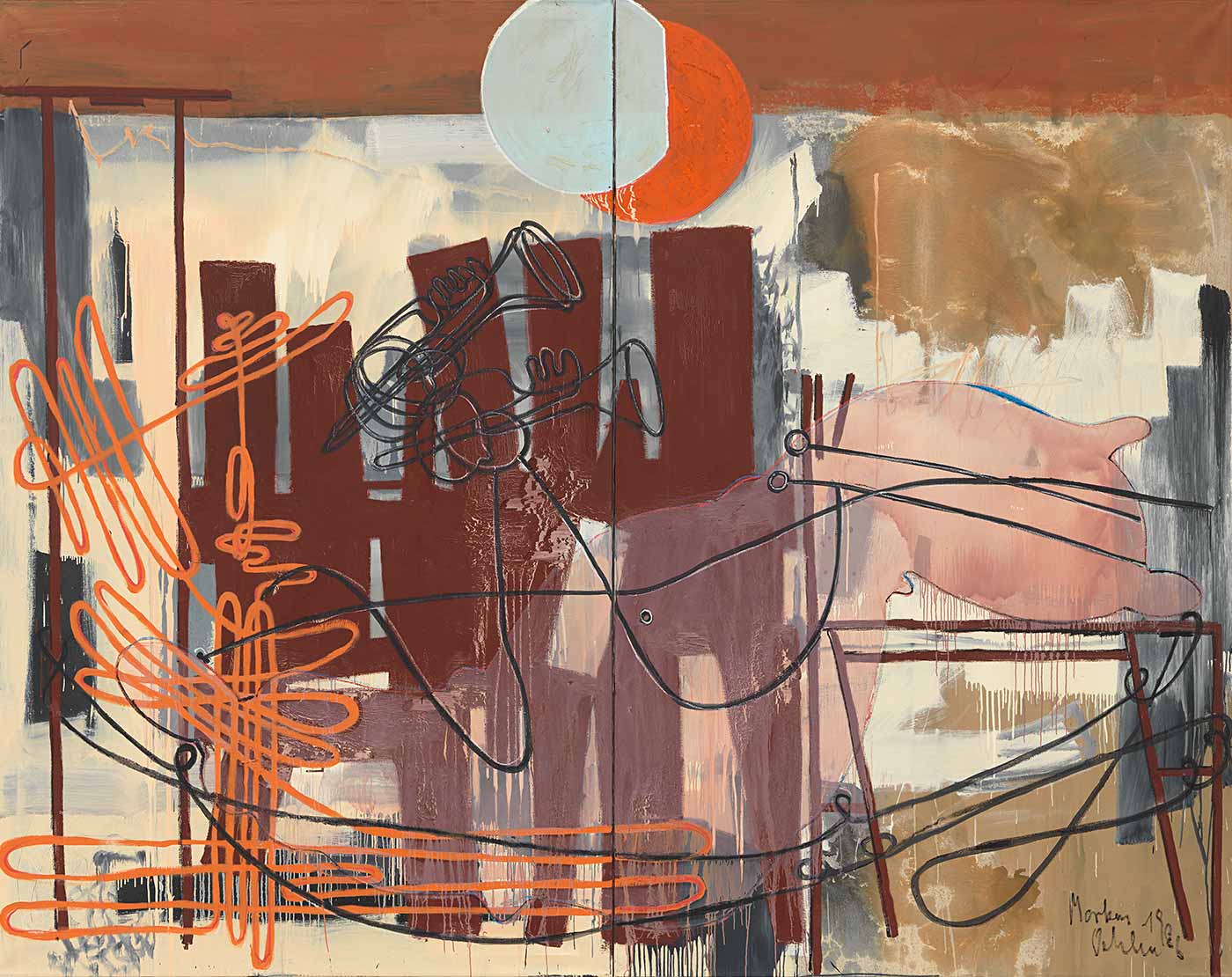
The dynamic connection of abstract fields and lines offers little to hold on to. Layered shapes in the background are evocative of the silhouette of a city. In the foreground orange and black lines interweave; they immediately dissolve any representational quality.
Nude and still life – the title alludes to classical genres of painting; but they are ironized and subverted. Even though nude and trumpet can just about be made out, they do not make the narrative of the painting any more accessible. On the contrary, the surprisingly unequivocal title highlights that the majority of the painting defies a simple explanation.
Markus Oehlen skipped the destructive phase, which his colleagues experienced to begin with. He distanced himself from their political sarcasm and dedicated himself to painting. While he occasionally exhibited together with his brother Albert as well as Büttner, Herold and Kippenberger, his approach to contemporary painting was quite autonomous. Texture, contours, colour and canvas themselves became the subject of new painting.
MÜLHEIMER FREIHEIT
NO. 110
In the autumn of 1980 six artists moved into a studio in Cologne-Deutz. The group was named after the street Mülheimer Freiheit, where the studio was. In this painting the co-founder Walter Dahn depicted the painters of the group Hans Peter Adamski, Peter Bömmels, Jiří Georg Dokoupil, Gerard Kever und Gerhard Naschberger.
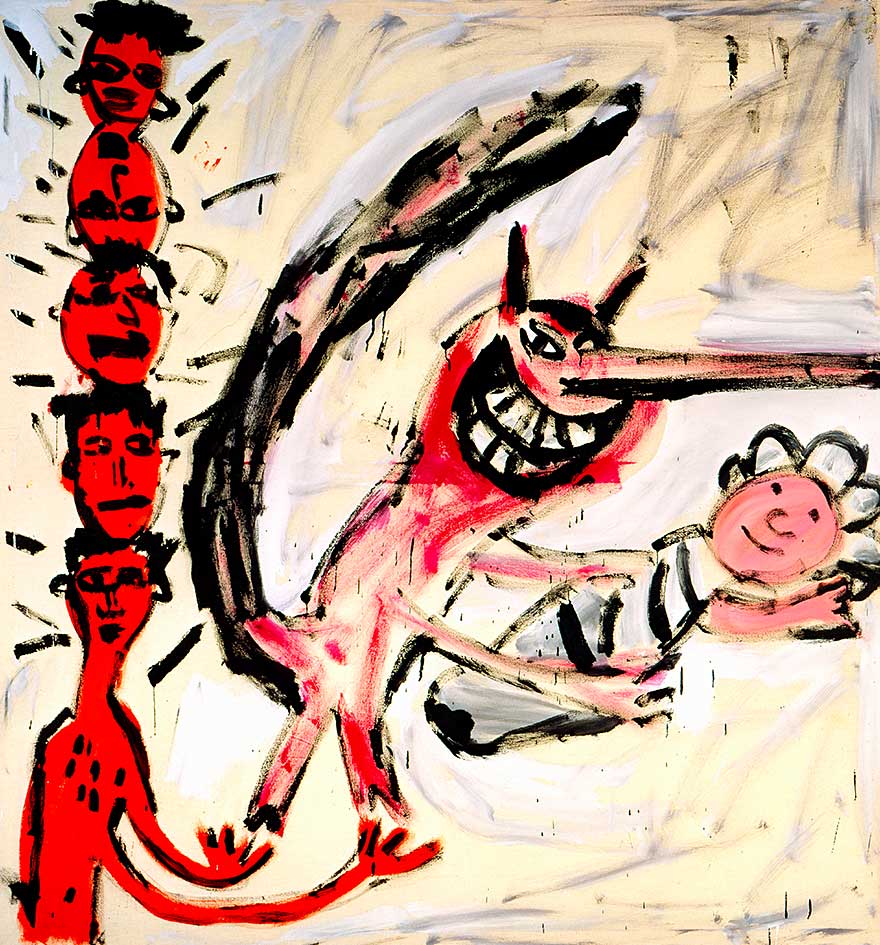
TWO PUKERS
The two heads at the centre of the painting are spewing red paint into the deep blue of the background. Most directly Walter Dahn and Jiří Georg Dokoupil express a mood, with which they react to themselves or society in general.
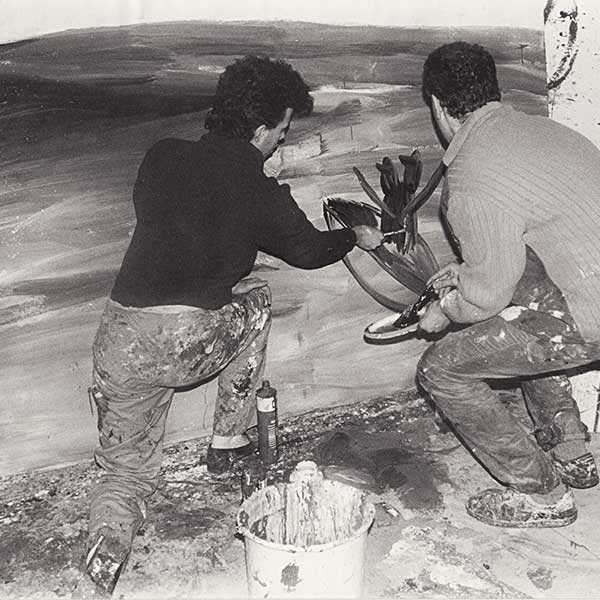
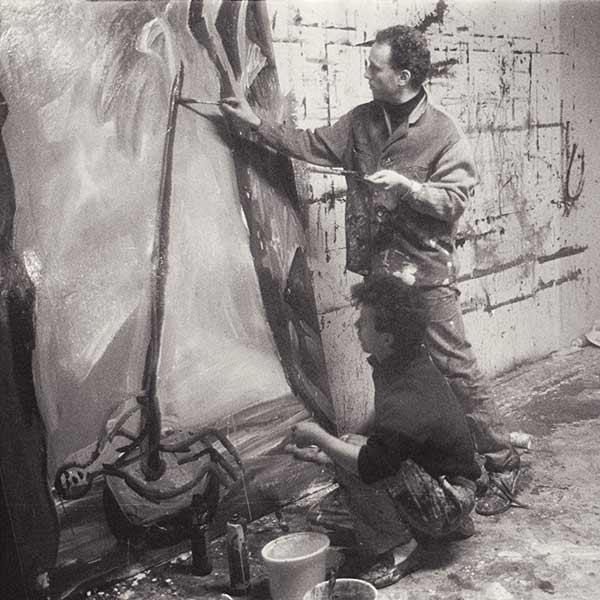
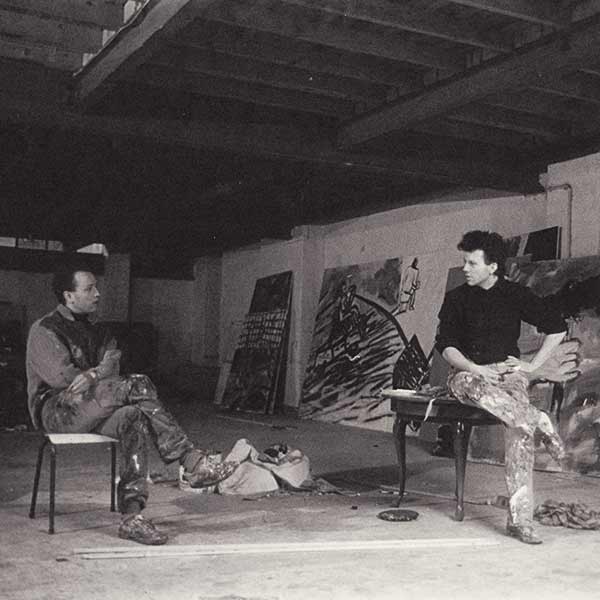
From the beginning we were interested in producing a sort of honesty. We had an idea, a notion, and we had to find an adequate solution for it [...]
Jiří Georg Dokoupil13
COW AND CHERRY BLOSSOM

A woman dressed in clothes and with a hairdo of Japanese appearance is busy milking a cow. The front half of the animal is dissolving into the grey of the background.
A blossoming branch of cherry is reaching into the painting where the animal’s head should be. The painting looks as though the artist reassembled it from bits of a newspaper. The execution is evocative of Japanese ink painting. The two-dimensionality of the patterned red screen evokes another Japanese art from, the colour woodcut that had already inspired the Impressionists.
The filigree painting in emulsion paint and watercolour appears like a carefully executed paper work. The selection and arrangement of the objects on the other hand seems random. Faced with a world, where the potential of all media, styles and topics has already been exhausted, it seems as though Adamski sees the plausible solution in the destruction of styles – another type of Bad Painting.
PARALLEL SPHERES

Figurative painting of the 1980s does not strive for unity of a painting. Contexts are consciously ruptured. The moment of dissolution becomes the content of the image. This method can be considered concept and common element of this generation of painters. It is one possible explanation for the radical change of painting in the 1980s.
Personal hint
PAINTERLY MONTAGE
This is only visible in the original
A red star is lying on the ground – amidst licking flames and wafts of smoke. The pictorial space is fragmented by numerous objects. At a second glance they turn out to be books that have been screwed onto the support and then painted. The heavily symbolic motifs bring to mind topics such as the Cold War and the burning of books. Yet the painting cannot be clearly read.
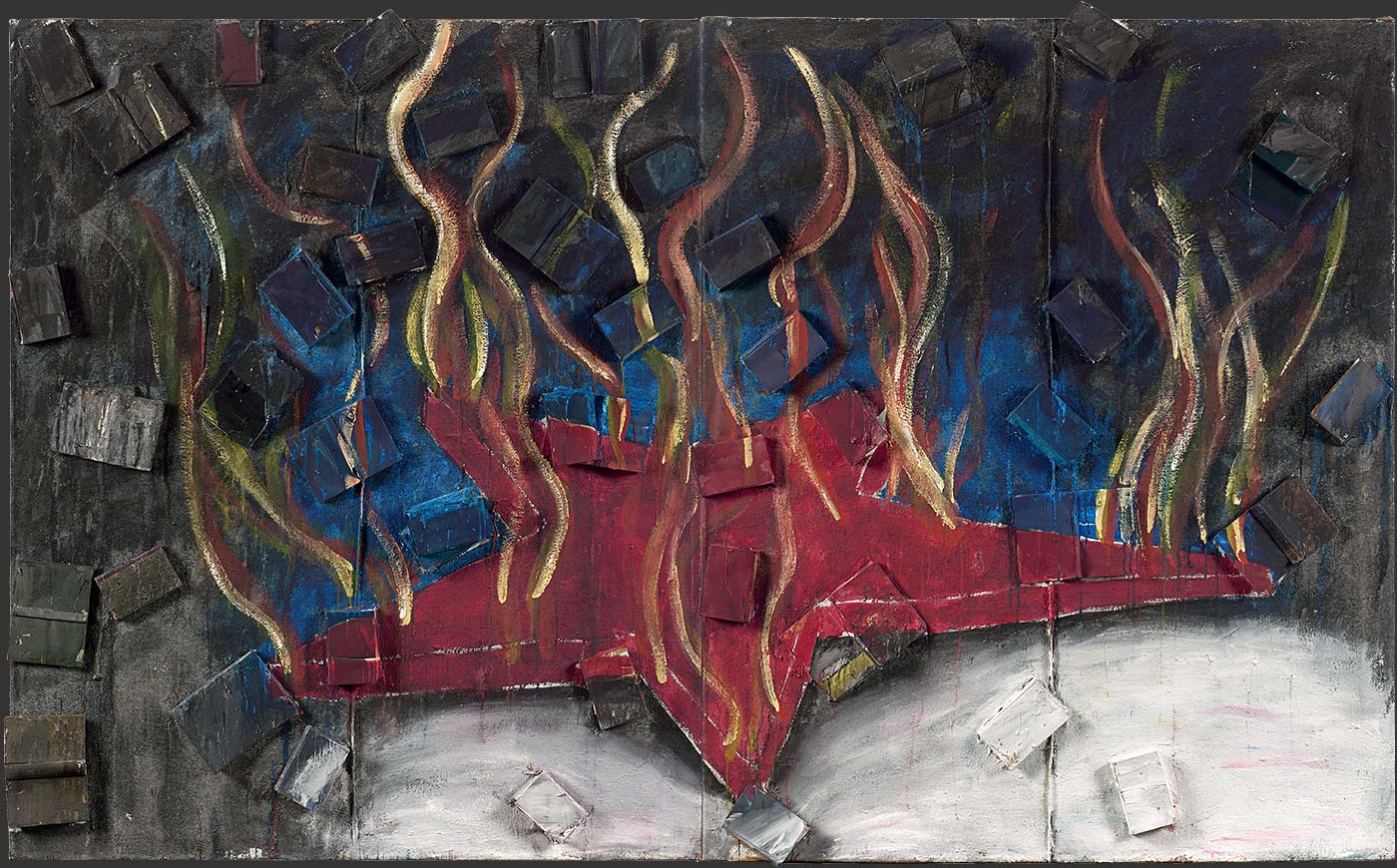
In a series of works, one of them “Star in Adversity”, Dokoupil cites the style of the US-American artist Julian Schnabel, who also works with ceramic shards, which he applied to the canvas.
Dokoupil also imitated the styles of other artist colleagues. His frequent change of style makes it difficult to recognise his works – a counter-plan to the strategies of the art market, where recognisable authorship is crucial.
A taboo would soon make me so nervous that I would have to deal with it.
Jiří Georg Dokoupil14


